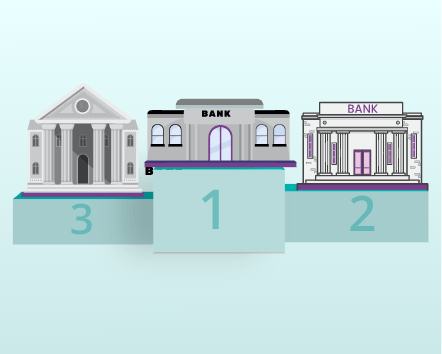
The Asia Pacific region is emerging as a wealth management hotspot and is set to outpace all other regions across the world as a high-net-worth market. Sustainable revenue growth even under existing challenging circumstances is top of the agenda for wealth managers in the region. The question is how can they achieve it? To answer this and other questions regarding wealth management in Asia Pacific, leaders from Simon Kucher and Partners, AWS, and SunTec got together on a webinar on Driving Sustainable Revenue Growth in Wealth Management. The focus of the webinar was to understand how to power the next stage of growth through pricing and revenue management. And the speakers included Dr. Silvio Struebi, Managing Partner, Hong Kong, Simon Kucher and Partners, Kiran Jagannath, Head of Financial Services and IT Enterprise Services, India, AWS, and Clinton Abbot, Senior Vice President – Head of Product Management, SunTec. The session was moderated by Balagopal Ravibalan, Senior Principal, SunTec.
Wealth Management in a State of Flux

Like with the rest of the banking and financial services sector, the business of wealth management is undergoing deep transformation. Customers in Asia are becoming more affluent and at the same time, they are becoming increasingly demanding.
Traditional offerings available in the market no longer please them. Competition is increasing rapidly, while regulations governing the sector are growing more stringent and complex. Investors expect returns on investment from banks, while clients want to know exactly what they are paying for, and the banks themselves want to accurately gauge how much customers are willing to pay. And the emergence of digital class assets like NFTs and cryptocurrencies has added an extra element of volatility to the segment.
Determining the right price, and delivering value to high-net-worth individuals (HNWI) with hyper-personalized, relationship-based pricing within the wealth management segment is vital. Unfortunately, as Clinton Abbot pointed out, traditional banking systems developed in the 1960s were built for individual lines of business, with little to no integration with any other business or division. For example, data pertaining to retail banking customers remained within that division, while data pertaining to wealth management remained within that business. But this product-centric approach cannot work today when hyper-personalization is key to success. The key to sustainable revenue growth lies in breaking down silos, simplifying complexities, and leveraging technology to engage meaningfully with customers.

Breaking Down Silos
for a 360-degree
Service
The business of banking has been made complicated by bankers. But now customer expectations are forcing them to simplify processes and break down silos. Customers especially in high-net-worth markets expect a holistic relationship-based engagement, highly personalized products and services and a value-driven experience.
If data pertaining to this individual’s engagement with the bank remains in silos, the wealth manager would not be able to understand customer behavior in a holistic manner and be unable to deliver personalization across retail, corporate or wealth management services. With an integrated approach, the wealth manager would be better equipped to identify relevant services and create better bundles.
The key focus for banks going forward should be to plug the holes and decrease complexity. While customer offerings can and must be dynamic, banks must leverage technology to break down silos to integrate data and improve operational efficiencies.
An intelligent middle-layer solution can help banks break down silos to offer a holistic view of customer behavior and help banks deliver personalized, relationship-based wealth management offerings.

Better Data Management is Key to Better Wealth Management
Kiran Jagannath agreed with the need to reduce complexity and stressed the fact that data volume and complexity are increasing at an unprecedented pace. Most organizations today are struggling to not just store, and integrate data across silos, but also analyze it effectively for intelligent, usable insights. Leveraging data effectively is crucial for wealth management. He gave the example of a leading private bank in India that was finding it difficult to collect data from internal and external systems and then process it for meaningful insights. AWS worked with the bank to create scalable data warehouses and bottomless data lakes. Services like AWS Glue were then used to bring all the data together, move and replicate it across multiple data stores. Once this was in place, Amazon Athena was deployed to process and analyze the data and derive usable insights. The bank was able to analyze data in real time and use the insights to build a consistent experience across channels. Cross-selling and upselling were based on customer behavior and deduced from real-time transactional data on their credit cards. The bank was able to reduce fraud and improve customer experience substantially.
Banks now must strike a balance between securing data, meeting customer expectations about tracking and traceability and ensuring compliance with regulations on pricing transparency. For example, regulators in Hong Kong and Singapore now demand proper controls and disclosures pertaining to pricing transparency and customer protection. Balancing all these requirements is not impossible if some changes are made. Banks need to establish better relationship-based pricing strategies and governance to establish a solid foundation that integrates pricing, compliance, and operating models. Unfortunately, many banks still make bare minimum investments in this area. Stop-gap solutions will not work anymore and strategic investments in state-of-the-art pricing software combined with process optimization can ensure effective revenue management and long-term profitability.

Managing Digital Class Assets
Digital class assets like cryptocurrency and NFTs are already seeing wide adoption and bring with them a whole new set of challenges. Volatility, unpredictability, and security are some of the concerns surrounding digital class assets. But these offer banks a good opportunity to deliver highly differentiated value propositions. This space is growing rapidly and going mainstream, but the pattern of growth and evolution is still fluid, and banks need to be able to observe and move quickly to capitalize on opportunities within this space. Technology will continue to play an important role in digital class asset management. And the role of technology will be to simplify and democratize new digital assets as they come in. The process of pricing governance will also change considerably. Earlier pricing would be decided by a pricing committee, and it was a time-consuming process that did not leave much scope for flexibility or agility. This approach will not work in the new era of digital class assets that exist, change, and evolve in real time. Clinton Abbot stressed the fact that banks must be able to quickly assess information and come up with relevant, personalized pricing in real time. Even seemingly irrelevant information can prove useful, he said, giving the example of a bank that used local weather information to deal with huge crowds at their branches by offering attractive relevant pricing discounts and offers.
Assets under Management (AuM) in the Asia Pacific are expected to double from USD 15. 1 trillion in 2017 to USD 29.6 trillion by 2025.1 But the truth is, only about 20 percent of the total wealth in this region has been tapped into by the wealth management industry.2 Majority of holdings in the region are still in the form of cash and deposits. Banks today are hard-pressed to drive profitability amidst increasing regulatory pressures and a lack of differentiated offerings. Right now, they must focus on delivering a highly differentiated proposition coupled with speed of advice, ability to respond swiftly to market opportunities and managing costs. Digital transformation journeys in banking hold the key to better wealth management practices and wealth maximization in high-net-worth markets like the Asia Pacific. Better data storage and handling to ensure trustworthy high-quality data coupled with quick real-time analysis for usable insights can unlock new possibilities for wealth managers in the coming years. Hyper-personalization in real time is what is moving the world and banks must work on delivering this effectively. At the same time, they must find effective ways to take people on this digital transformation journey – wealth managers, and customers alike.